#luisa of naples and sicily
Text

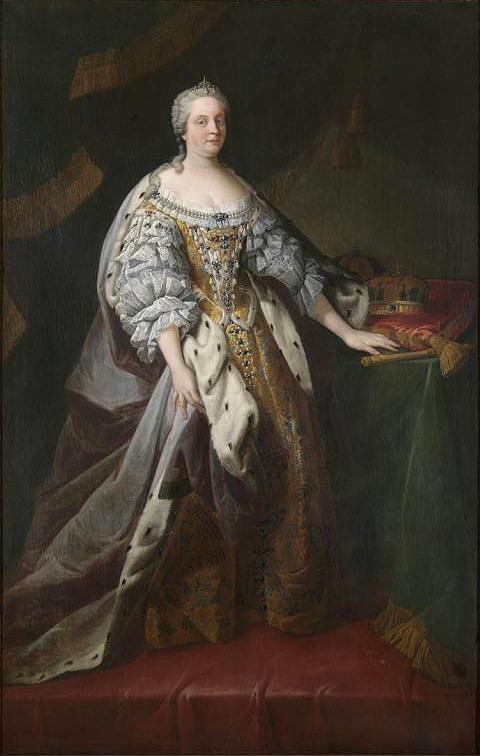
It's time for the return of the “Living People Related to Maria Theresa” game, started by @vivelareine
Here we have a descendant of hers through her daughter, Maria Carolina, the Queen of Naples and Sicily. (Though you can also trace her line of descent to other children of Maria Theresa, due to the amount of intermarriage among the Habsburg Dynasty). Her name is Vittoria of Savoy, and she's a 20 year old fashion model, who is studying art history and political science.
Vittoria of Savoy (Born December 29th, 2003) –> Emanuele Filiberto of Savoy –> Vittorio Emanuele of Savoy –> Umberto II –> Victor Emmanuel III –> Umberto I –> Victor Emmanuel II –> Maria Theresa of Austria –> Luisa of Naples and Sicily –> Maria Carolina of Austria –> Maria Theresa
#vittoria of savoy#maria theresa#umberto i#maria carolina of austria#umberto ii#victor emmanuel iii#Victor Emmanuel II#maria theresa of austria#luisa of naples and sicily#long live the queue
7 notes
·
View notes
Text
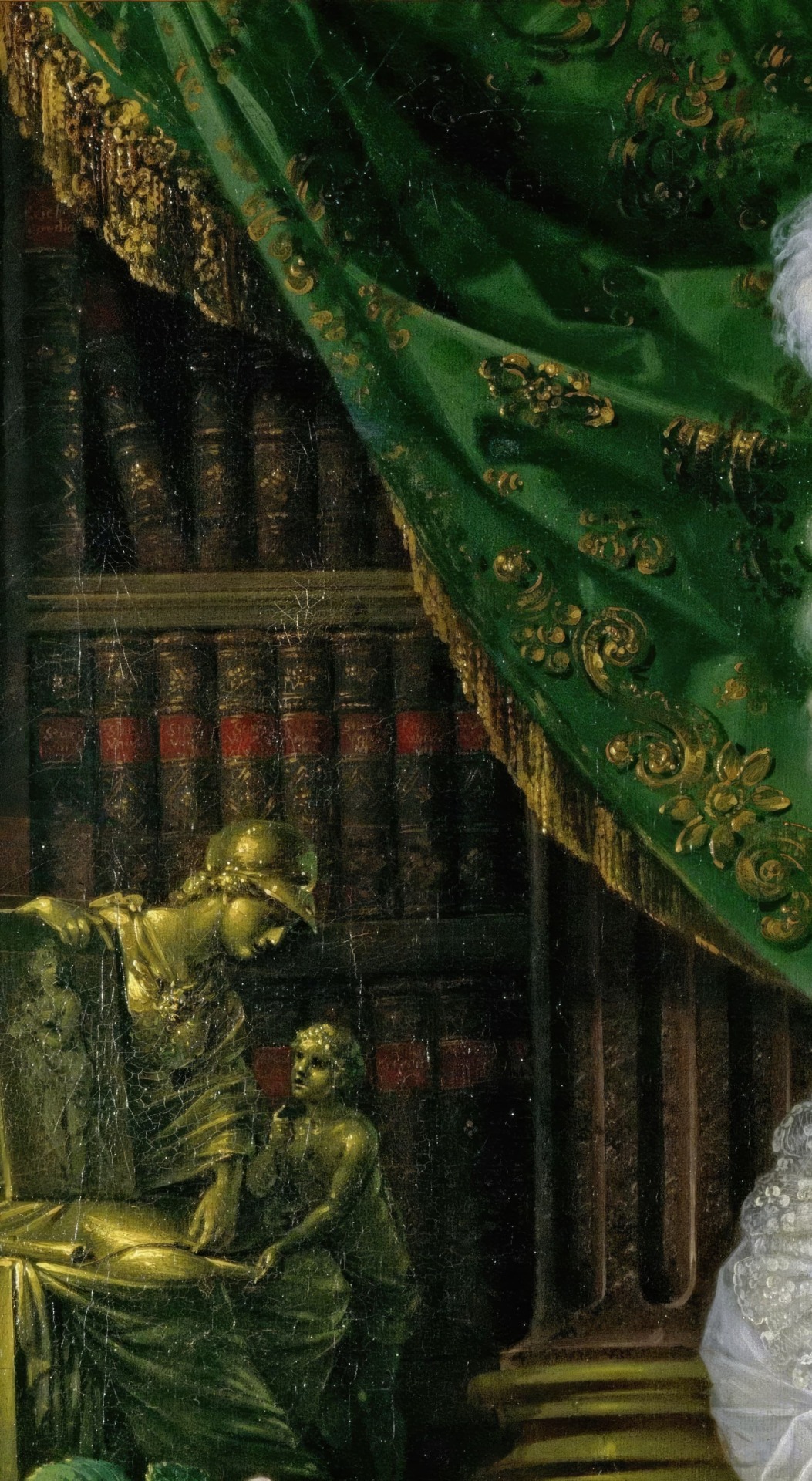
Princess Luisa of Naples and Sicily (detail) (Joseph Dorffmeister, 1797)
38 notes
·
View notes
Text

María Luisa of Parma, Princess of Asturias, circa 1765
Anton Raphael Mengs (1728–1779, German)
Maria Luisa of Parma (Luisa Maria Teresa Anna; 9 December 1751 – 2 January 1819) was, by marriage to King Charles IV of Spain, Queen of Spain from 1788 to 1808 leading up to the Peninsular War. She was rivals with the Duchess of Alba and the Duchess of Osuna, attracting popular attention. The death of her daughter-in-law Princess Maria Antonia of Naples and Sicily, whom she disliked, was said to be the poisoning by the Queen. María Luisa was notoriously reputed to have had many love affairs. The most infamous of them was with the prime minister Manuel de Godoy, whom contemporary gossip singled out in particular as a long-time lover.
Maria Luisa was interested in music and art, and known as a protector of artists, most notably Francisco Goya.
In 1792, the Royal Order of Noble Ladies of Queen Maria Luisa was founded on her suggestion, to reward noble women who distinguished themselves for their services and talents. As such, it was established as an honour reserved only for women.
Blanca Portillo acted Maria Luisa's role in 'Goya's Ghosts'.
#dianthus#carnation#portrait#painting#anton raphael mengs#18th century art#18th century painting#women portrait#María Luisa of Parma
59 notes
·
View notes
Text
Preliminary List of Monarchs:
Rudolph, First Archduke of Austria
Fredrick III, Holy Roman Emperor, Archduke of Austria, etc.
Maximilian I, Holy Roman Emperor, Archduke of Austria, etc.
Ferdinand I, Holy Roman Emperor, Archduke of Austria, etc.
Maximilian II, Holy Roman Emperor, Archduke of Austria, etc.
Maximilian III, Archduke of Austria, Disputed King of Poland
Rudolph II, Holy Roman Emperor, King of the Germans, Archduke of Austria, etc.
Matthias, Holy Roman Emperor, Archduke of Austria, etc.
Ferdinand II, Holy Roman Emperor, Archduke of Austria, etc.
Ferdinand III, Holy Roman Emperor, Archduke of Austria, etc.
Leopold I, Holy Roman Emperor, Archduke of Austria, etc.
Joseph I, Holy Roman Emperor, Archduke of Austria, etc.
Philip I, The Handsome, King of Castile
Charles I (V), Holy Roman Emperor, Archduke of Austria, King of Spain, etc.
Philip II, King of Spain, King of Portugal, King of Naples and Sicily
Philip III, King of Spain, King of Portugal, Naples, Sicily, etc.
Philip IV, King of Spain, King of Portugal
Charles II, King of Spain
Margret of Austria, Duchess of Savoy, Governor of the Netherlands
Mary of Hungary, Queen of Hungary and Bohemia, Governor of the Netherlands
Charles VI, Holy Roman Emperor, Archduke of Austria, Disputed King of Spain
Maria Theresa, Archduchess of Austria, King of Hungary, etc.
Joseph II, Holy Roman Emperor, Archduke of Austria, etc.
Leopold II, Holy Roman Emperor, Archduke of Austria, etc.
Franz II/I, Holy Roman Emperor, Austrian Emperor, Archduke of Austria, etc.
Ferdinand I, Emperor of Austria, King of Hungary, etc.
Franz Joseph, Emperor of Austria, King of Hungary, etc.
Maximilian of Mexico
Charles I, Emperor of Austria, King of Hungary
Maria Leopoldina, Empress of Brazil
Pedro II, Emperor of Brazil
Napoleon II, King of Rome, Duke of Reichstadt
Marie Luisa, Duchess of Parma, Empress of the French
Ferdinand III, Grand Duke of Tuscany
Leopold II, Grand Duke of Tuscany
Ferdinand IV, Grand Duke of Tuscany
Feel free to tell me who you think we are missing or to start sending in propaganda for your favorite. It will be included in the poll.
#there are some you could argue with here#and technically I have too many to make a tidy bracket#but hmmmm who to drop#also yes I did add more women so Maria Theresa wouldn't be the only one
5 notes
·
View notes
Text
Power and Beauty in Royal Families

In the opulent world of royal families, power and beauty have long been intertwined, serving as a means to assert dominance and maintain a facade of grandeur. However, history has proven time and again that these two elements don't always align harmoniously. Princess Luisa of Naples and Sicily serves as a remarkable example of the complex relationship between power and beauty, challenging conventional notions and inviting us to question the essence of true royalty.
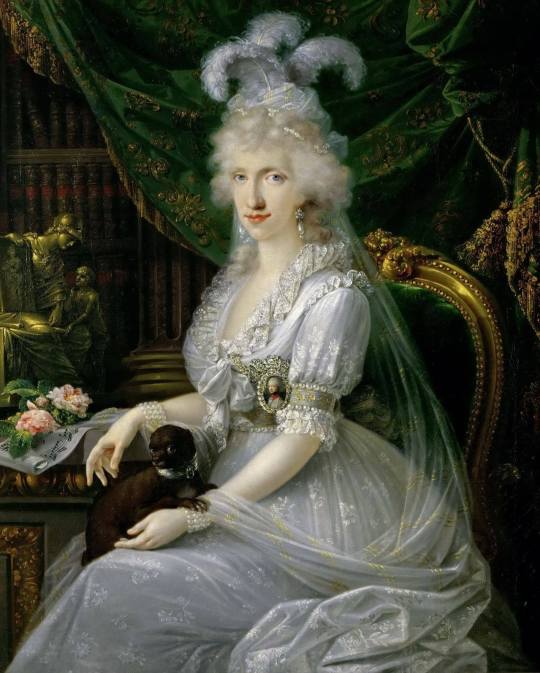
It was Princess Luisa's unfortunate fate to be perceived as "extremely ugly," a stark contrast to the ethereal standards of beauty expected within royal circles. Even renowned French artist Elisabeth Vigée-Le Brun, respected for her exquisite portraiture, admitted her personal struggle in immortalizing the princess's visage. In a candid letter, she revealed, "Louise was extremely ugly, and I would have gladly done without finishing her portrait. In the end, I modified some features of the princess, so as to make it at least presentable." These words, dripping with critical undertones, shed light on the burden of beauty in a world driven by appearances.
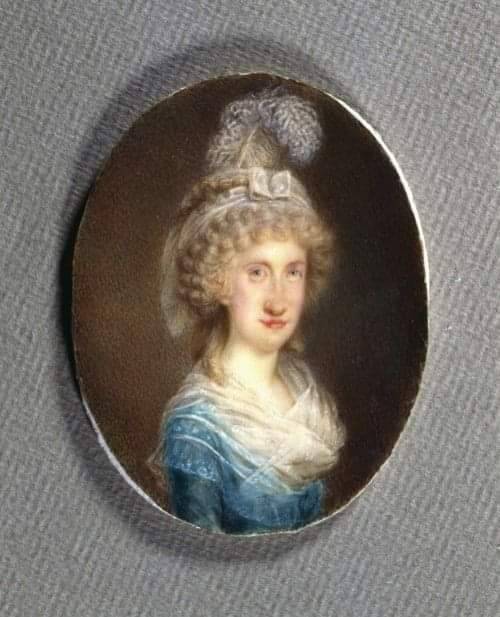
In this irony-laden pursuit of presenting Princess Luisa as "presentable," we glimpse the dark underbelly of power within royal families. It becomes evident that beauty, at times, is merely a superficial veneer employed for the sake of political alliances and dynastic ambitions. Behind the grandiloquent tapestries and shimmering tiaras lies a complex web of power plays, where the aesthetic shortcomings of one individual can threaten the very fabric of a royal bloodline.
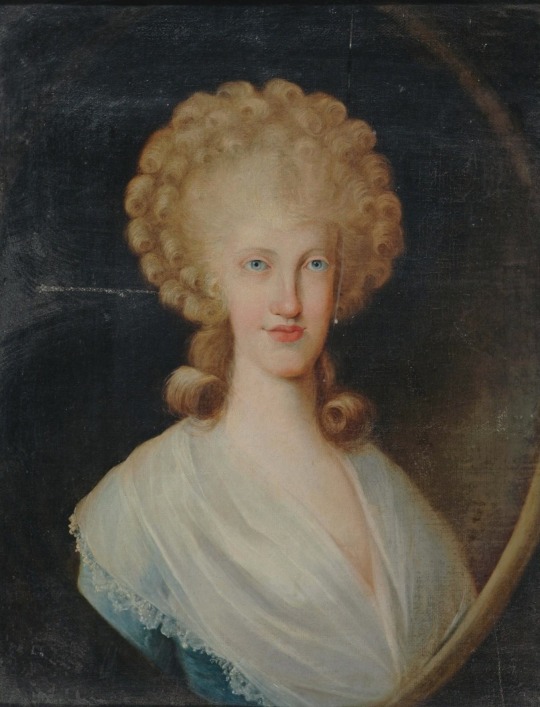
Yet, ironically, it is precisely these deviations from the expected norms that challenge the conventional narrative of beauty within royal families. Louise's unconventional appearance, though considered a disadvantage, inadvertently offers a window into a realm of authenticity and uniqueness often stifled by the confines of regal standards. It confronts us with the paradox that power and beauty do not always align, and that true royalty lies not solely in physical features, but in the strength of character and the ability to wield influence beyond the superficial.
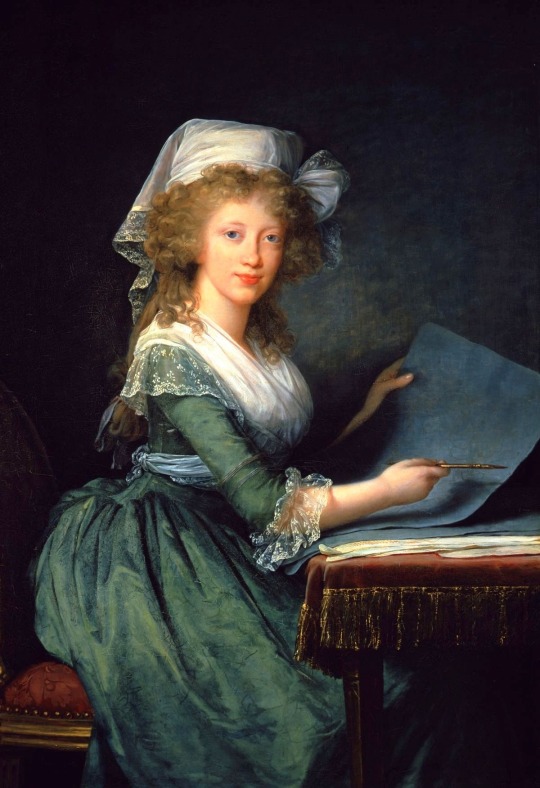
In the context of Princess Luisa and her undeniable beauty deficit, we are reminded to question the often shallow correlation between power and beauty. This brief glimpse into the world of royal families stirs a critical perspective, urging us to look beyond the glossy facades and delve into the intricate tapestry of human complexity. In doing so, we uncover the truth that power and beauty, while often entangled, are ultimately separate entities, each with its own unique expression and significance in the enigmatic realm of royal heritage.
Text: ChatGPT
Images: Wikipedia
0 notes
Photo
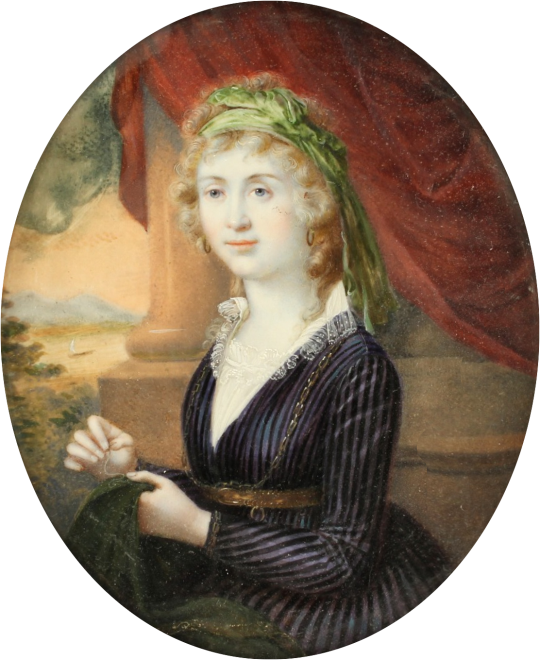
Maria Luisa di Borbone (1773-1802), daughter of Ferdinando IV of Naples. Unidentified painter.
#unidentified painter#princess maria luisa of naples#casa di borbone#borbone di napoli#borbone delle due sicilie#regno di napoli
8 notes
·
View notes
Photo

Luisa Maria Amelia Teresa of Naples and Sicily, Princess of Naples and Sicily, Grand Duchess Consort of Tuscany, wife of Archduke Ferdinand III of Tuscany (1797). Joseph Dorffmeister (Hungarian, 1764-1806). Oil on canvas. Kunsthistorisches Museum.
On 15 August 1790, Luisa married her double first cousin, Archduke Ferdinand of Austria. The wedding ceremony took place in Florence, the capital of the Grand Duchy of Tuscany which her husband had ruled since the beginning of the year. Her husband ruled the Grand Duchy till 1801, when in the Treaty of Aranjuez, he was forced by Napoleon to make way for the Kingdom of Etruria.
30 notes
·
View notes
Photo

#King Ferdinand VI and III of Naples and Sicily#Queen Maria Carolina of Naples and Sicily#Princess Maria Theresa of Naples and Sicily#Princess Luisa of Naples and Sicily#Prince Francis of Naples and Sicily#Princess Maria Cristina of Naples and Sicily#Princess Maria Cristina Amelia of Naples and Sicily#Prince Gennaro of Naples and Sicily#Royalty#1780's
1 note
·
View note
Photo
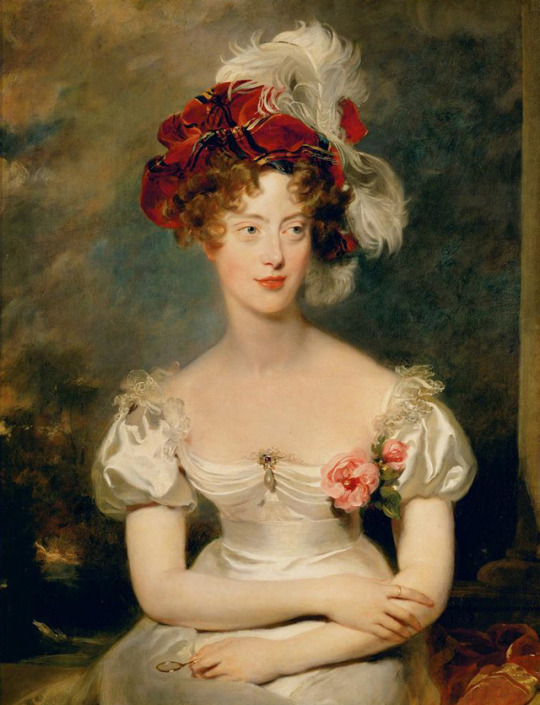
Maria Carolina of Naples and Sicily, Duchess of Berry (5 November 1798 - 17 April 1870)
#maria carolina of naples and sicily#maria carolina ferdinanda luisa#duchess of berry#daughter of francis i of the two sicilies#married charles ferdinand duke of berry#then ettore carlo lucchesi-palli#history#women in history#18th century#19th century#art
17 notes
·
View notes
Photo






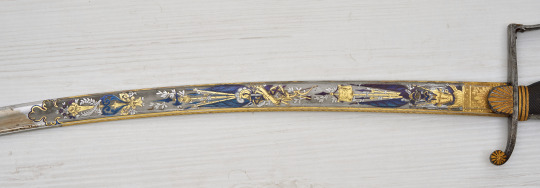
Magnificent and important Sabre of Leopold II of Habsburg-Lorraine, Grand Duke of Tuscany (1824-1859).
Iron hilt with gilt rosettes and the crowned cipher "L II" of Grand Duke Leopold II of Tuscany.
The grip of cut black ebony panels. The pommel, grip finish, and the guard of the quillons gilded.
Truly magnificent edged blade with polychrome blued and richly gilded decorative etching on both sides depicting trophies of arms, flags, crossed rifles, and rich arabesque decoration.
Iron scabbard with gilt fittings with sun symbols and the gilt inscription: "Firenze 18 Giugno 1844". On two suspension rings. Total length: 98.5 cm.
Leopold was born the second son of Grand Duke Ferdinand III and his first wife Luisa Maria of Naples-Sicily in Florence, Palazzo Pitti. Married to Princess Maria Anna of Saxony since 1817, he succeeded his late father in government on 18 June 1824. After the death of his beloved first wife Maria Anna, the Grand Duke married Princess Maria Antonia of Naples-Sicily on 7 June 1833. Maria Antonia bore ten children within eighteen years, six of whom reached adulthood, two daughters and four sons. The revolutions of 1847/1848 in the context of the Risorgimento moved him to issue a constitution on 15 February 1848. However, it was not sufficient for the radical forces in the population, who wanted to completely eliminate Austrian rule. Leopold II then left the country in February 1849 and a provisional republican government was formed, which briefly allied itself with the revolutionary Roman Republic that had existed in the Papal States for about five months at the same time. Already in April, the attempt at a republican democracy in Tuscany was crushed by a counter-revolution initiated by Austrian troops and the Grand Duke was able to return. In April 1859, a popular uprising tried to force him to join the Kingdom of Sardinia-Piedmont in the Sardinian War against Austria. As Leopold II had pledged neutrality towards Austria, he left Tuscany with his family on 27 April and abdicated on 21 July 1859 in favour of his son Ferdinand IV from his second marriage. However, Ferdinand no longer ruled the Grand Duchy, as Tuscany joined the Kingdom of Sardinia after a referendum in 1860, thus ending the rule of the House of Habsburg-Lorraine-Tuscany
Source: The Sale Room
35 notes
·
View notes
Photo
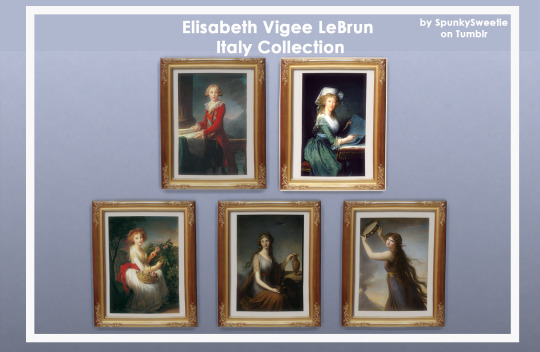
Elisabeth Vigee LeBrun Italy Collection by SpunkySweetie
Hello everyone, welcome back to the second part of my Elisabeth Vigee LeBrun collection! This time, this series is about the paintings she did during the early 1790′s! I released the first part of this set back in April and it was very well received so I hope everyone enjoys part II as well! ^-^
If there are any issues, do not be scared to let me know! ^0^
Part I:
Download the first part: French Collection (Free, no adfly)
Download the Italy Collection: Here (Free, no adfly)
CC Information:
- BGC.
- $1755.
- 5 swatches as shown above.
- Tested in-game.
People Featured In the Paintings:
- Francesco di Borbone, 1790
- Luisa Maria Amelia di Borbone, 1790
- Maria Cristina of Bourbon, (later Maria Cristina of Naples and Sicily), 1790
- Anne Pitt as Hebe, 1792
- Emma Hamiltion as a Baccchante, 1792.
#ts4cc#ts4 custom content#ts4 historical cc#elisabethvigeelebrun#spunkysweetiecc#sims4maxismix#ts4painting#ts4download#sims4#sims4cc#spunkysweetie#ts4historicalcc
37 notes
·
View notes
Photo
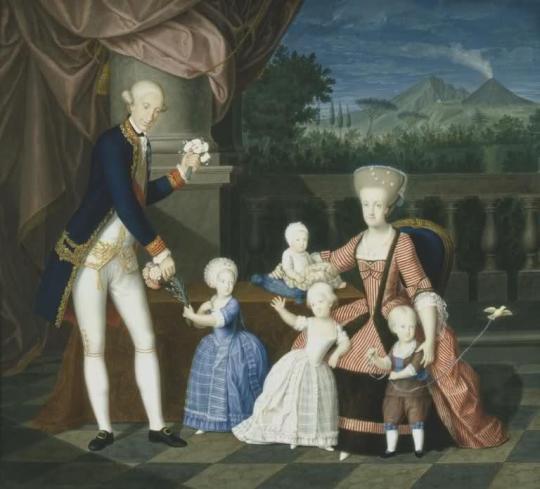
The Royal Family of Naples, dated to sometime in 1775-1776.
Maria Theresa is in blue accepting flowers from her father Ferdinand, while Luisa leans on her mother’s lap and gestures towards them. Maria Carolina has one her arms around their son and heir, Prince Carlo, and the other around baby Maria Anna sitting on a cushion.
#Ferdinand iv#maria carolina of austria#maria theresa of naples and sicily#maria anna of naples and sicily#luisa of naples and sicily#Carlo of Naples and Sicily#long live the queue
13 notes
·
View notes
Text

- E lo princep respos al almirall: -Ques aço que vos volets que yo hi faça? que si fer yo puch , -volenters ho fare.- Yo , dix lalmirall , quem façats ades venir la filla del rey Manfre, germana de madona la regina Darago, que vos tenits en vostra preso aci el castell del Hou , ab aquelles dones e donzelles qui soes bi sien ; e quem façats lo castell e la vila Discle retre . - E lo princep respos , queu faria volenters. E tantost trames un seu cavaller en terra ab un leny armat, e amena madona la infanta , germana de madona la regina , ab quatre donzelles e dues dones viudes. E lalmirall reebe les ab gran goig e ab gran alegre , e ajenollas, e besa la ma a madona la infanta.
Ramon Muntaner, CRÓNICA CATALANA, p. 221
Beatrice was born (probably) in Palermo around 1260. She was the first child and only daughter of Manfredi I of Sicily and his second wife, the Epirote princess Helena Angelina Doukaina (“[…] et idem helenam despoti regis emathie filiam sibi matrimonialiter coppulavit, ex quibus nata fuit Beatrix.”, Bartholomaeus de Neocastro, Historia Sicula, in Giuseppe Del Re, Cronisti e Scrittori sincroni Napoletani editi ed inediti, p. 419). It’s quite plausible the baby had been named after Manfredi’s first wife, Beatrice of Savoy (mother of Costanza, who will later become Queen consort of Aragon and co-regnant of Sicily). The little princess would soon be followed by three brothers: Enrico, Federico and Enzo (also called Anselmo or Azzolino). With three sons, Manfredi must have thought his succession was secured.
Beatrice’s father was one Federico II of Sicily’s many illegitimate children, although born from his most beloved mistress (and possibly fourth and last wife), Bianca Lancia. Since his father’s death in 1250, Manfredi had governed the Kingdom of Sicily on behalf firstly of his (legitimate) half-brother Corrado and, after his death in 1254, of Corrado’s son, Corradino. In 1258, two years prior Beatrice’s birth, Manfredi had been crowned King of Sicily in Palermo’s Cathedral, de facto usurping his half-nephew’s rights.
Like it had happened with Federico, Manfredi was soon opposed by the Papacy, which didn’t approve of the Hohenstaufen’s rule over Sicily (and Southern Italy with it) and the role of the King as the champion of the Ghibellines faction. In 1263, Urban VI managed to convince Charles of Anjou, younger brother of Louis IX the Saint, to present himself as a contender to the Sicilian throne. Three years later, on January 6th 1266, the French duke was crowned King of Sicily by the Pope in Rome, thus overthrowing Manfredi. On February 26th, in Benevento, the usurped King then tried to get back his kingdom by facing Charles in the open field, but failed and lost his life while fighting.
The now widowed Queen Helena had previously fled to Lucera (in Apulia) with her children (Beatrice was now six), her sister-in-law Costanza, and her step-daughter, the illegitimate Flordelis, where she thought they would be safer. When they got news of the disaster of Benevento and Manfredi’s death, they fled to Trani from where they planned to set off to Epirus. The unfortunate party was instead betrayed and handed off to the Angevin. On March 6th night, Helena and the children were taken hostage and later separated. The Queen was sent at first to Lagopesole (in Basilicata) and finally to Nocera Christianorum (now Nocera Inferiore), where she would die still in captivity in 1271.
Enrico, Federico and Enzo were taken to Castel del Monte. Following Corradino’s death in 1268, Manfredi’s young sons (the oldest, Enrico, was just four at the time of his capture) were, to all effects, the rightful heirs to the Sicilian throne. It’s undoubtful Charles must have wanted them gone, or at least forgotten. In 1300 they were moved to Naples, in Castel dell’Ovo (which, at that time, was called San Salvatore a mare), under the order of the new Angevin king, Charles II. According to some sources, Federico and Enzo died there within the short span of a year. As for Enrico, he died alone and miserable in October 1318, he was 56.
As for Beatrice, her fate was more merciful compared to that of her mother and brothers and, for that, she had to thank her sex, which made her harmless in Charles’ eyes (as long as she was left unmarried). After being separated from her family (she will never see them again), the six years old princess was, like her brothers, held captive (although not together) in Castel del Monte. In 1271, she was moved to Naples, in Castel dell’Ovo, under the guardianship of its keeper, a French nobleman called either Landolfo or Radolfo Ytolant. Manfredi’s daughter is mentioned in a rescript of Charles dated March 5th 1272, from which we learn she had been granted at least a maid (“V Marcii xv indictionis. Neapoli. Scriptum est Iustitiario et erario Terre laboris etc. Cum ex computo facto per magistrum rationalem Nicolaum Buccellum etc. cum Landulfo milite castellano castri nostri Salvatoris ad mare de Neapoli pro expensis filie quondam Manfridi Principis Tarentini et damicelle sue. ac filie quondam comitis Iordani et damicelle sue dicto castellano in unc. auri novem et taren. sex de pecunia presentis generalis subventionis residuorum quolibet vel qua canque alia etc. persolvatis. non obstante etc. Recepturus etc.”, Monumenti n. XLIV. in Domenico Forges Davanzati, Dissertazione sulla seconda moglie del re Manfredi e su’ loro figliuoli, p. XLIII-XLIV). Like it had happened with her mother, and unlike her brothers, it appears Beatrice was treated with courtesy and respect. In her misfortune, she could count on the company of a fellow prisoner and distant relative, the daughter of Giordano Lancia d’Agliano, who was her grandmother Bianca Lancia’s cousin and had been a loyal supporter of her father, Manfredi.
On Easter Day of 1282, an anti-Angevin rebellion sparkled in Palermo would soon transform itself into a war to get rid of the so much hated Frenchmen, the so-called War of the Sicilian Vespers. It’s dubious that, close in her prison, Beatrice came to know about it. She might have also been surprised to know that her half-sister, Costanza, had been asked by a delegation of fellow Sicilians to take possession of what was hers by right (the throne) as she was their “naturalis domina”. Her rights were shared with her husband, Pedro III of Aragon, who would personally take part in the war and be rewarded with a joint coronation in November 1282.
For Beatrice, everything changed in 1284. On June 4th, Italian Admiral Ruggero di Lauria, at the service of the Aragonese King (he was also Costanza’s milk brother), defeated the Angevin fleet just offshore from Naples and took Carlo II prisoner. Being in clear superiority, the Sicilians could now demand (among many requests) the release of Princess Beatrice. Carlo’s eldest son and heir, Carlo Martello Prince of Salerno, could nothing other than obliging them. (“Siciliani autem , & omnes faventes Petro Aragonum, incontinenti de ipsorum victoria plurimum exultantes, Nuncios, & Legatos ad quoddam Castrum ex parte Principis direxerunt , ubi quaedam filia quondam Domini Regis Manfredi sub custodia tenebatur , ut dicta filia fine ullo remedio laxaretur , quae statim fuit antedictis Legatis , & Nunciis restituta.”, Anonimo Regiense, Memoriale Potestatum Regiensium. Gestorumque iis Temporibus. Ab anno 1154 usque ad Annum 1290, in Ludovico Antonio Muratori, Rerum Italicarum scriptores ab anno aerae christianae quingentesimo ad millesimumquingentesimum, vol. VIII, p. 1158).
Beatrice, finally free, left Castel dell’Ovo headed for Capri, where the Admiral was waiting for her. She had spent 18 long years in captivity and was now 24. From Capri she reached Sicily, where she was warmly welcomed and with a lot of enthusiasm, to meet her half-sister Costanza.
As the Queen’s closest free relative (both Pedro and Costanza had no interest in asking for Enrico’s release since, as a male, he had more rights than Costanza to inherit the throne), Beatrice had a great political value. At first, Ranieri Della Gherardesca’s name came up. He was the son of that Count Gherardo who had fought together with the unfortunate Corradino (the sisters’ royal cousin), and for that had been beheaded in Naples in 1268 alongside his liege. Finally the perfect candidate was found. Manfredo of Saluzzo was born in 1262 and was the son of Marquis Tommaso I and his wife Luigia of Ceva. Like Beatrice, Manfredo was strongly related to Costanza, specifically, he was her nephew since Tommaso and the Sicilian Queen were half-siblings (they were both Beatrice of Savoy’s children).
The marriage contract between the two is dated July 3rd 1286 and the contracting parties are on one side “la serenissima signora constanza regina dy aragon e dy sicilia e dil ducato de puglia principato di capua” and, on the other side “il marchexe thomas di sa lucio signore de conio una cum mạdona alexia soa moglie”. Tommaso declares that Manfredi will inherit his title, privileges and possession upon his death. If, after the marriage is celebrated, Manfredi were to die first, Beatrice would enjoy possession of the castle and some properties. The Marquise Luisa declares to agree with her husband’s decision (“[…] e a tuto questo la marchexa aloysia madre dy manfredo consenty”, Gioffredo Della Chiesa, Cronaca di Saluzzo, p. 165-166). The union was formally celebrated the year after.
Beatrice bore Manfredi two children: Caterina and Federico, born presumably in 1287 (“Et da questa beatrix haue uno figlolo chiamato fredericho et una figlola chiamata Kterina” Gioffredo Della Chiesa, Cronaca di Saluzzo, p. 185). In 1296 Tommaso died, so Manfredi inherited the marquisate and Beatrice became Marquise consort of Saluzzo. She will die eleven years later at 47, on November 19th 1307 (“Venne a morte nel dì 19 novembre di quest’anno Beatrice di Sicilia moglie del nostro marchese Manfredo, e noi ne accertiamo il segnato giorno col mezzo del rituale del monastero di Revello , nel quale leggesi annotato: 19 novembris anniversarium d. Beatricis filiae quondam d. Manfredi regis Ceciliae et uxoris d. Manfredi primogeniti d. Thomae marchionis Saluciarum, quae huic monasterio quingen- tas untias in suo testamento legavit.” Delfino Muletti, Memorie storico-diplomatiche appartenenti alla città ed ai marchesi di Saluzzo, vol III, p. 76). Her husband would quickly remarry with Isabella Doria, daughter of Genoese patricians Bernabò Doria and Eleonora Fieschi. Isabella would give birth to five more children: Manfredi, Bonifacio, Teodoro, Violante and Eleonora.
As of Beatrice’s children, Caterina would marry Guglielmo Enganna, Lord of Barge (“Catherina figlola dy manfredo e de la prima moglie fu sorella dy padre e dy madre dy fede rico e fu moglie duno missere gulielmo ingana capo dy parte gebellina in questy cartiery dil pie monty verso bargie.”, Gioffredo Della Chiesa, Cronaca di Saluzzo, p. 256). Federico’s fate would be more complicated. Like many mothers before and after her, Isabella Doria wished to see her own firstborn, Manfredi, succeeded his father rather than her step-son. The new Marchioness of Saluzzo successfully instigated her husband against his son to the point the Marquis. in a donatio mortis causa dated 1325, disinherited Federico in favour of the second son (Federico would have settled with just his late mother’s belongings), Manfredi (“Et questo faceua a instigatione de la moglie che lo infestaua a cossi fare.” Gioffredo Della Chiesa, Cronaca di Saluzzo, p. 224). Federico’s natural rights were later acknowledged by an arbitral award proclaimed in 1329 by his paternal uncles Giovanni and Giorgio of Saluzzo, and finally, an arbitration verdict dated 1334 and issued by Guglielmo Earl of Biandrate and Aimone of Savoy. As a condition of peace, the future Marquis should have granted his younger brother the castle and villa of Cardè as a fief. Stung by this defeat, Manfredi IV, his wife Isabella and beloved son Manfredi retired to Cortemilla. Federico died in 1336 and was succeeded by his son Tommaso, who would inherit his father’s rights and feud with the two Manfredi's. After being defeated by his half-uncle in 1341 (the older Manfredi, his grandfather, had died the year before), resulting in losing his titles, possessions and freedom, Tommaso would later regain what was of his right and rule as Marquis of Saluzzo.
Sources
-ANONIMO REGIENSE, Memoriale Potestatum Regiensium. Gestorumque iis Temporibus. Ab anno 1154 usque ad Annum 1290, in Ludovico Antonio Muratori, Rerum Italicarum scriptores ab anno aerae christianae quingentesimo ad millesimumquingentesimum, vol. VIII
-BARTHOLOMAEUS DE NEOCASTRO, Historia Sicula, in Giuseppe Del Re, Cronisti e Scrittori sincroni Napoletani editi ed inediti
- DEL GIUDICE GIUSEPPE, La famiglia di Re Manfredi
- DELLA CHIESA, GIOFFREDO, Cronaca di Saluzzo
-FORGES DAVANZATI, DOMENICO, Dissertazione sulla seconda moglie del re Manfredi e su’ loro figliuoli
- LANCIA, MANFREDI, Il complicato matrimonio di Beatrice di Sicilia
-Monferrato. Saluzzo
-MULETTI, DELFINO, Memorie storico-diplomatiche appartenenti alla città ed ai marchesi di Saluzzo, vol II-III
- MUNTANER, RAMON, Crónica catalana
- SABA MALASPINA, Rerum Sicularum
- SAVIO, CARLO FEDELE, Cardè. Cenni storici (1207-1922)
-Sicily/Naples: Counts & Kings
#women#history#women in history#historical women#history of women#beatrice of sicily#manfredi i#helena angelina doukaina#costanza ii#manfredi iv of saluzzo#federico of saluzzo#caterina of saluzzo#House of Hohenstaufen#norman swabian sicily#aragonese-spanish sicily#house of saluzzo#people of sicily#women of sicily#myedit#historyedit
45 notes
·
View notes
Text
Letters from 1814. Murat and Bentinck
Next to the Austrians, the second power Murat had to deal with when he joined the cause of the Allies was “les Anglais”, who for years had protected the ex-king of Naples Ferdinand on Sicily. And if Austria was annoyed with Joachim Murat for his half-hearted support, Lord William Bentinck’s behaviour seems to have been almost hostile.
All documents again taken from Helfert, “Joachim Murat”.
Lord Bentinck's proclamations to the Italians
Italiani! La Gran Bretagna ha le sue truppe su i Vostri lidi; ella Vi porge la mano per liberarvi dal ferreo giogo di Bonaparte.
Il Portogallo la Spagna la Sicilia l'Olanda attestano i principj liberali e disinteressati che animano queste potenze.
La Spagna per la sua ferma risoluzione, per il suo valore, e per gli sforzi della sua Alleata è riuscita nella più bella impresa. I Francesi sono stati scacciati dal suo territorio, la sua indipendenza è assicurata. La sua civile libertà è stabilita.
La Sicilia protetta da questa potenza istessa riusci di salvarsi dall'universale diluvio per cui nulla ha sofferto; mediante il genio benefico del suo Principe passò dalla schiavitù alla libertà, e si affretta di far risorgere il suo antico splendore frà le Nazioni indipendenti..
L'Olanda vola a conseguire un uguale intento.
L'Italia sola resterà dunque sotto il giogo?
I soli Italiani combatteranno contro gl' Italiani a pro di un Tiranno e per la servitù della patria?
Italiani, non più esitate, siete Italiani! E tu specialmente, Armata Italiana, pensa che la gran causa della tua patria è nelle tue mani. Guerrieri d'Italia, non Vi si domanda di venire a noi, ma Vi si domanda che facciate valere i Vostri proprje diritti e che siate liberi.
Chiamateci e noi accorreremo, ed allora i nostri sforzi riuniti faranno che l'Italia divenga ciò che nei suoi migliori tempi l'Italia già fù, e ciò che la Spagna è. .
Livorno 14 Marzo 1814.
William C. Bentinck
Commandante in Capo delle truppe brittanniche.
***
Italians! Great Britain has her troops on your shores; she extends her hand to free you from the iron yoke of Bonaparte.
Portugal, Spain, Sicily and Holland bear witness to the liberal and disinterested principles that animate these powers.
Spain, by her firm resolution, her valour and the efforts of her allies, has succeeded in the most magnificent enterprise. The French have been driven from her territory, her independence is assured. Her civil liberties are secured.
Sicily, protected by this same power, succeeded in saving herself from the universal scourge from which she suffered nothing; through the beneficent genius of her Prince she passed from slavery to liberty, and hastens to resurrect her ancient splendour among the independent nations....
Holland is striving to achieve the same.
Will Italy alone remain under the yoke?
Will the Italians alone fight against Italians in favour of a tyrant and for the servitude of the fatherland?
Italians, do not hesitate any longer, you are Italians! And you especially, Italian Army, think that the great cause of your homeland is in your hands. Warriors of Italy, we do not ask you to join us, we ask you to assert your rights and be free.
Call on us and we will come, and then our combined efforts will make Italy what in its best days Italy was and what Spain is.
Livorno 14 March 1814.
William C. Bentinck
Commander in Chief of the British troops.
This proclamation, especially the part about the “Italian Army”, seems to be directed more to Eugène’s Italians than to Murat’s, but it’s still interesting to note that Bentinck hints at a common Italian cause (”Don’t fight your Italian brothers!”) which his government will not support.
Austrian envoy Count Mier had followed Murat to Upper Italy and wrote to Metternich about the awkward situation.
Mier to Metternich [postscript]
Reggio 20 March 1814
My Prince!
Lord Bentinck has been here for several days; he refuses to abandon his idea and claim to take possession of the whole of Tuscany. I have done everything possible to arrange this affair, without having been able to succeed so far. The King has offered some modifications to this determination of seizing a country which he has occupied militarily, where he has established a provisional administration, and captured the strongholds by capitulation. He offered to supply whatever the English troops would need for the establishment of their magazines, their depots, their subsistence, their transport, etc. He offered that Lord Bentinck take the military command of the Grand Duchy, and of the Neapolitan troops which are there, to make them march with the English to occupy the country all along the coast up to Genoa, wanting only to keep the civil administration of Tuscany and to draw the revenues which are indispensable to him for the payment of his army, he having refused the subsidies which the Count of Neipperg had promised to obtain for him from England on condition that they would let him have the revenues of the countries occupied by his army. Lord Bentinck rejecting all these modifications, the King finally proposed to him to submit the arrangement of this affair to the arbitration of Lord Castlereagh, who would surely decide it in favour of the English, H.M. wishing by this to save appearances, his dignity and not to appear to yield solely to the will of Lord Bentinck. The latter still refused to do so, saying that the King only wanted to gain time, and declared that, if he was not first put in possession of Tuscany, he would drive out the Neapolitans, revolutionise the country, and embark with his troops to land in the Kingdom of Naples and there proclaim King Ferdinand. These and other similar declarations, made in a harsh manner, which were likely to alarm and excite the King's distrustful and hot-headed character, infuriated him, and he declared in his turn that he would rather lose his crown than disgrace himself in the eyes of his army and the whole world by complying with Lord Bentinck's arbitrary decisions. I employed every possible reasoning with the English general to urge him to desist from these pretensions; I told him that his obstinacy would confuse affairs in Italy; that it would paralyse the means and forces which were to be employed for the liberation; that it was the moment to act, and not to discuss secondary objects; that I was more than sure that his Government had sent him to Italy to fight the common enemy, and not to enter into discussions as to the future partition of that country; that in matters of this nature all personalities must be put aside; that his government and all the world would blame him in this matter, etc. To all these arguments and many others like them he replied that he did not care about any of this, and that he would not yield to Joachim in any way; that his honour and the dignity of his nation were at stake. This is where things stand, and I fear, knowing the character of the individuals, the most unfortunate consequences of this misunderstanding.
The two attached proclamations were distributed on Lord Bentinck's arrival in Livorno. The one addressed to the Sicilian troops is really of a nature to give the King the greatest suspicions on the good faith of the English. The difficulties made by Russia and Prussia in acceding to our treaty of alliance with the King of Naples, the declarations in this regard by England, the reports which the King receives on all sides about the intrigues of Queen Carolina to interest in her favour the Empresses and other influential persons, the pretensions of Lord Bentinck and his conduct in Livorno, all of this is working on the distrustful mind of the King who believes himself already sacrificed, and in this position of things it is difficult to count on an active cooperation. He must be relieved of his fears, which are not without foundation, and then I am sure that he will act frankly and vigorously.
I have the honour etc.
The “Queen Carolina” mentioned in the last paragraph would be “Maria Carolina”, wife of Ferdinand, and the empresses probably Empress Elizabeth of Russia (a former princess of Baden) and Austrian Empress Maria Luisa, a former princess of Modena-Este.
(And am I allowed to note that dear Joachim here has no problem seeing his troops under the command of somebody else, even of “the English”, just as long as this somebody does not happen to be the Beauharnais boy?)
Bentinck himself also summed up the situation, the way he saw it, in a letter to the Neapolitan Minister of Foreign Affairs:
Bentinck to Gallo (copy)
Bologna this 1st April 1814
In case the Neapolitan Government should require some written confirmation of the sentiments which Lord Castlereagh has already verbally enunciated, which confirmation has not been asked for, considering it unnecessary, the Undersigned is authorized to declare officially:
That the English Government fully approves the treaty concluded between the Austrian and Neapolitan Governments, that it consents to the addition of territory specified therein under the same condition made by Austria of the active and immediate co-operation of the Neapolitan army, and that, if the English Government refuses to sign a treaty "in limine", that this is only because of the feelings of delicacy and honour which oppose the sacrifice of the hereditary states of a former ally without an indemnity, and that the undersigned has orders, in consequence of which he must invite the Neapolitan Government to make its utmost efforts for the same object.
Such was the feeling of the British Government.
It would without doubt be opposed to the Undersigned's frankness if he did not express his individual opinion, that the expectations, which the treaty gave rise to, have unfortunately been only too much disappointed.
The principal object for which this alliance and these sacrifices were made, the prompt and active cooperation of the Neapolitan army, has by no means been obtained. The Austrian army is still paralysed on the Adige when, by the march of the Neapolitan army on the upper Po, it could have long since reached the Alps. The most suspicious negotiations take place directly with the enemy, and at the same time the British co-operation, which the Neapolitan Government, if it were genuine, would desire more than any other of the Allies, is rendered impossible by the withholding from it of the necessary means of safety and subsistence.
If such is the military conduct of the Neapolitan Government, its political conduct is no less inexplicable. The Neapolitan government pledges its consent to all the arrangements of the Allies in Italy; it begins by declaring that various states would be immediately ceded to their legitimate Sovereigns, but it officially declares that these states will be kept until peace, and at the same time the administrative organisation of these regions presents itself everywhere with the aspect of a permanent occupation, and everywhere the Neapolitan agents and papers reveal views of ambition and enlargement entirely opposed to the intentions of the Allies, and which might not be without objection, if even such an addition of power were to assume a proper direction, but which are certainly very dangerous when it is not yet decided on which side this power will be placed.
The undersigned is far from presenting these remarks in a hostile and reproachful sense; they are dictated by a friendly spirit and a desire to see the intentions of the Allies realised. The war is still going on, and there is still time to remove any doubts and dissatisfaction that may exist.
Thus the undersigned seriously recommends to the Neapolitan government
to effect its prompt and cordial co-operation with the Austrian army, to allow by the sacrifice of a part of Tuscany to the British expedition the means which are indispensable to it for co-operation, and which are due to the dignity of the British Government; if the cession of a territory belonging to somebody else can be called a sacrifice, it will be highly compensated by mutual assistance and trust -
to renounce all tendency to an isolated and separate policy -
and above all to restore the Sovereign Pontiff to his seat without delay. The cruel treatment suffered by this venerable personage, which has been highlighted by his inspiring virtues and extraordinary firmness, has aroused, as we have just seen, the greatest of passions.
If the conduct of the man who now governs France, in this respect, has attracted to him, more than any other act in his life, the hatred of the whole world, it would undoubtedly be a very bad policy to refuse a measure recognised as being of the utmost necessity by all those who would like to see the great foundations of the social order, religion and morality, restored.
The undersigned has the honour to express again the sentiments of his highest consideration.
L. Wm Bentinck.
To H. E. Mr. Duke of Gallo, Minister of Foreign Affairs.
Always cute to see the Brits protect the Pope. But all this in-fighting at least explains how the demoralized, war-weary Italo-French troops of the Kingdom of Italy (I understand ~40.000 men, at least on paper) still managed to hold out until after Napoleon’s abdication.
8 notes
·
View notes
Text
MARÍA ISABEL OF SPAIN
Queen Consort of the Two Sicilies
(born 1789 - died 1848)
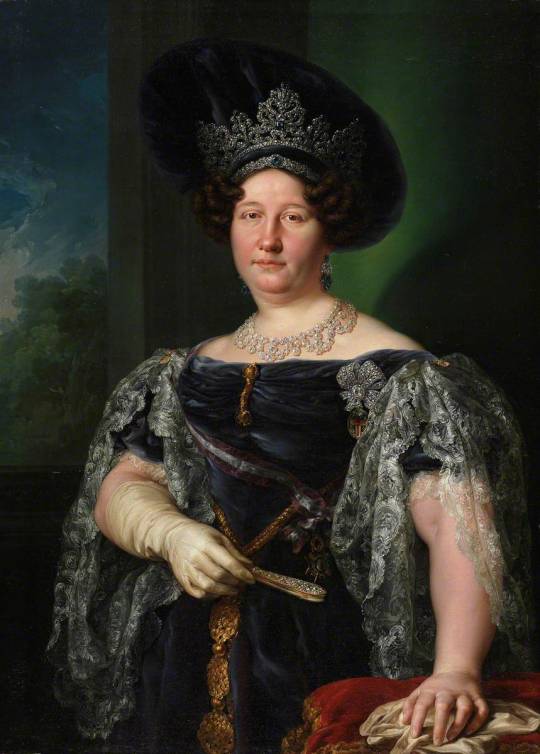
pictured above is a portrait of the Queen of the Two Sicilies, by Vicente López Portaña from 1829
-------------------- ~ -------------------- ~ --------------------
SERIES - On this day September Edition: María Isabel died on 13 September 1848.
-------------------- ~ -------------------- ~ --------------------
MARÍA ISABEL ANTONIA JOSEFA ANA TERESA FILIPINA was born in 1789, at the Royal Palace of Madrid. She was one of the youngest daughters of Carlos IV, King of Spain and Princess Maria Luisa of Parma.
Born a member of the Spanish branch of the HOUSE OF BOURBON, she was an INFANTA OF SPAIN from birth.
She was married to her first cousin FRANCESCO GENNARO GIUSEPPE SAVERIO GIOVANNI BATTISTA in 1802 and they had twelve children (check the list below). He was the Duke of Calabria as the Hereditary Prince Royal of the Kingdom of the Two Sicilies. She was 13 years old while he was already a widower aged 25 and his late wife was another first cousin of both of them, Archduchess Maria Klementine of Austria, with whom he already had two children.
Her new mother-in-law Archduchess Maria Karolina of Austria opposed to the wedding because Spain was allied to the French Republic, against the Austrian/British/Naples alliance.
After her wedding she became the DUCHESS OF CALABRIA and the HEREDITARY PRINCESS ROYAL CONSORT OF THE TWO SICILIES.
France had been a treat to Naples since the French Revolution. And in 1806 Napoléon I, Emperor of the French invaded Naples, deposed her father in-law Ferdinando IV, King of Naples, forced the Neapolitan Royal Family to exile in Sicily and put his own brother Joseph Bonaparte on the Neapolitan throne as Giuseppe, King of Naples.
Less then two years later Emperor Napoléon I also deposed her brother Fernando VII, King of Spain. Joseph Bonaparte was then removed from the Neapolitan throne and became José I, King of Spain. And in Naples the Emperor placed his brother-in-law Joachim Murat as Gioachinno, King of Naples.
The Neapolitan Royals fought against France but continued to be exiled in Sicily until they were allowed to return to Naples in 1815, after Napoléon's defeat and exile.
In 1816 her father-in-law was fully restored to the throne of Naples by the Congress of Vienna and by the end of the year the Kingdoms of Naples and Sicily were unified, creating the Kingdom of the Two-Sicilies. And her father-in-law became Ferdinand I, King of the Two Sicilies.
By 1825 her father-in-law died and husband succeeded as Francesco I, King of the Two Sicilies and she became the QUEEN CONSORT OF THE TWO SICILIES.
Six years later, in 1830, her husband died and was succeeded by their son as King Ferdinando II. And aged only 36, the QUEEN MOTHER OF THE TWO SICILIES soon engaged in love affairs.
Later in life she expressed the desire to remarry and her son, the King, agreed but make a list of possible suitors. She chose a younger Neapolitan general, FRANCESCO and married him privately in 1839. He was one of the sons of Nicola of Balzo, 3rd Duke of Presenzano and Caterina Crivelli and was created Count of Balzo. So she also became the COUNTESS OF BALZO. And do do her age they did not have any children.
Nine years after her second marriage, in 1848, the Queen Mother of the Two Sicilies died aged 59, at the Palace of Portici in Naples.
-------------------- ~ -------------------- ~ --------------------
Check my post about MARÍA ISABEL's children and their Royal Weddings!
MARÍA ISABEL and her first husband FRANCESCO I had twelve children...
Princess Luisa Carlotta of the Two Sicilies - wife of Infante Francisco de Paula of Spain;
Princess Maria Cristina of the Two Sicilies - wife first of Fernando VII, King of Spain and second of Agustín Fernando Muñoz and Sánchez, 1st Duke of Riánsares;
Ferdinando II, King of the Two Sicilies - husband first of Princess Maria Cristina of Sardinia and second of Archduchess Maria Theresia of Austria;
Carlo Ferdinando, Prince of Capua - husband of Penelope Smyth;
Leopoldo, Count of Syracuse - husband of Princess Maria Vittoria of Savoy;
Princess Maria Antonia of the Two Sicilies - wife of Leopoldo II, Grand Duke of Tuscany;
Antonio, Count of Lecce - unmarried;
Princess Maria Amalia of the Two Sicilies - wife of Infante Sebastián of Spain and Portugal;
Princess Maria Carolina of the Two Sicilies - wife of Carlos Luis, Count of Montemolín;
Princess Teresa Cristina of the Two Sicilies - wife of Pedro II, Emperor of Brazil;
Luigi, Count of Aquila - husband of Princess Januária of Brazil; and
Francesco, Count of Trapani - husband of Princess Maria Isabella of Tuscany.
-------------------- ~ -------------------- ~ --------------------
Two of her granddaughters named Isabel were supposed to become Monarchs in their own rights:
in 1883 Isabel II, Princess of Asturias succeeded as Isabel II, Queen of Spain; but
in 1889 Isabel, Princess Imperial of Brazil lost her rights of succession after the Monarchy was abolished in Brazil.
#maria isabel of spain#infanta of spain#infanta de espana#queen of the two sicilies#two sicilies#house of bourbon#bourbon#spanish royals#spanish royal family#royals#royalty#monarchies#monarchy#royal history#spanish history#european history#world history#history#history lover#18th century#19th century#napoleon i#napoleonic era#napoleonic wars#charles iv#ferdinand i#history by laura
3 notes
·
View notes
Text
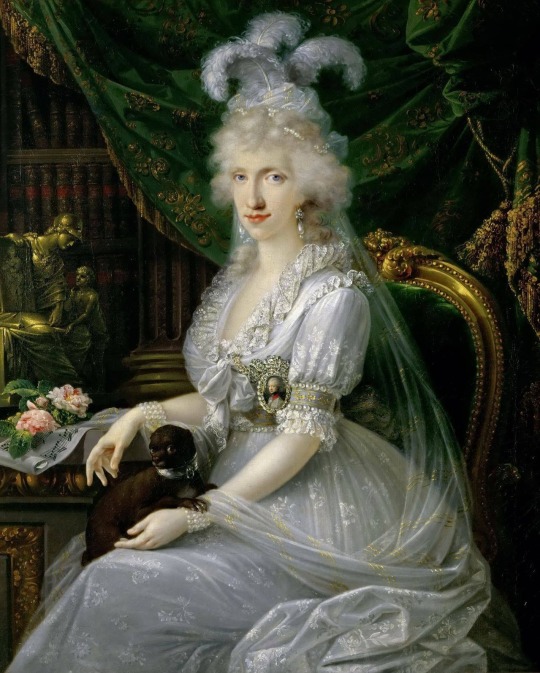
luisa maria, princess of naples and sicily and grand duchess of tuscany
joseph dorffmeister, 1797
161 notes
·
View notes